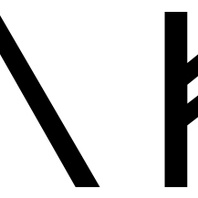
Viking Names
Tofi
The name Tófi is very common in the Viking Age, though mostly in Sweden and Denmark. It forms the first element of the hybrid place-name Toton, Nottinghamshire.
Read More
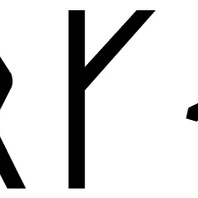
Viking Names
Thorgeir
The male name Þorgeirr is extremely common in the Viking world (including Ireland and Normandy) and an anglicised version appears as the first element of the village- and wapentake-name Thurgarton in Nottinghamshire.
Read More

Viking Names
Sigulf
Sigulfr is a Scandinavian male personal name from Old Norse Sig- ‘victory’ and Old Norse -ulfr ‘wolf’. The name is possibly found in a Norwegian place-name and appears once in Jämtland (modern day Sweden) in 1347. The name is recorded in Sweden as runic sikulf and in the forms Sighulf, Sigell and possibly in the much contracted form Siel in Denmark. Sigulfr is also the first element in the place-name Sileby, Leicestershire.
Read More
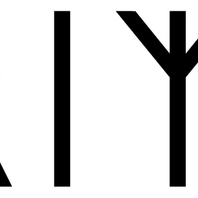
Viking Names
Grim
The Old Norse male name Grímr is common across the Scandinavian world, including the Viking diaspora. It is very common in English place-names, though some of these might rather represent an Old English mythological name associated with Woden, and there are other possibilities. For this reason, not all the hybrid names traditionally referred to as ‘Grimston hybrids’ necessarily have an Old Norse element and it is better to refer to them as Toton-hybrids. However, where the name is compounded with an Old Norse element such as -by (as in Grimsby), it is likely that it represents the Old Norse personal name. In Old Norse, Grímr is related to the word gríma ‘mask’ and mythological texts relate that is one of the god Óðinn’s by-names, deriving from his penchant for travelling about in disguise. It is also a common element in compound personal names, such as Þorgrímr. The father of the eponymous hero of Egils saga was called Skalla-Grímr ‘Bald-Grim’.
Read More
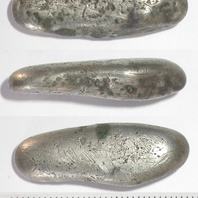
Viking Objects
Breedon Silver Ingot (X.A236.2009.0.0)
A Viking silver ingot which could have been used as bullion in payments or trade transactions, as well as a source of metal for jewellery making. The Vikings arriving in England had a bullion economy where they paid for goods with silver that was weighed to an amount agreed between the buyer and the seller. Hacksilver and silver ingots are the most common evidence for their bullion economy. It took some time for the Scandinavian settlers to adopt a monetary economy like that of the Anglo-Saxons, and both systems were used simultaneously for a while before they fully adopted the new system. They were familiar with monetary economies but they treated coins as just another form of silver before adoption of a monetary economy.
Read More
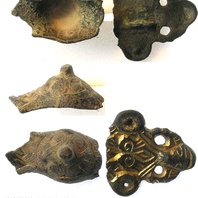
Viking Objects
Fragment of an Equal-Armed Brooch (SWYOR-FAFC04)
A fragment of a Viking Age equal-armed brooch found at Harworth Bircotes, Nottinghamshire. This fragment is the boss of the brooch and resembles brooches found at Birka, Sweden. Its decoration consists of a Borre style animal with gripping arms or legs. This is one of only six Scandinavian, Viking period equal-armed brooches recorded in England. For more information on Scandinavian jewellery in England check out our blog: Brooches, Pendants and Pins: Scandinavian Dress Accessories in England.
Read More
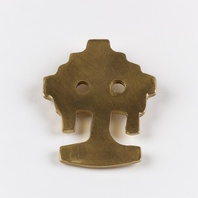
Viking Objects
Reproduction Jewellery Die Stamp
A copper alloy die for creating pressed silver or gold pendants. The original on which this is based had traces of interlace decoration. The presence of finds like this suggests that high-status jewellery production took place in the northern Danelaw.
Read More

Viking Names
Swithland
Swithland, in the West Goscote Hundred of Leicestershire, comes from Old Norse sviðinn ‘land cleared by burning’ and Old Norse lundr ‘a small wood’. Thus the place-name has the meaning of ‘the wood next to or containing land cleared by burning’.
Read More
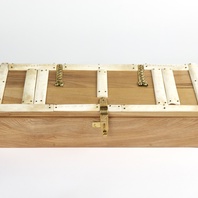
Viking Objects
Reproduction Wooden Box
A reproduction wooden box based on examples from Lincoln, York and Norway. The box is decorated with bone strips carved with a circular dot design. Boxes like this would have been fastened with padlocks
Read More
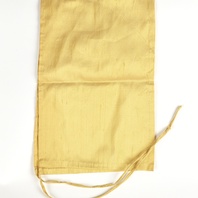
Viking Objects
Reproduction Silk Headdress
A yellow silk headdress based on examples found in Lincoln, York and Dublin. The silk would have been imported from the Eastern Mediterranean.
Read More
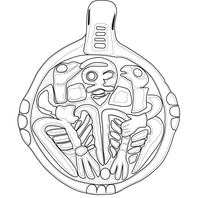
Viking Designs
Drawing of the Winteringham Pendant
A drawing of a cast silver, gilded pendant which has been interpreted as representing an image of Odin and his two ravens Huginn and Muninn. There are a number of close parallels which establish the wide currency of this subject group. These include numerous examples from Russia and two from Sweden, including some with silver gilding. A silver pendant with a related, but distinct design is known from Sjælland, Denmark. With some exceptions, pendants were generally worn by women as part of their Scandinavian dress.
